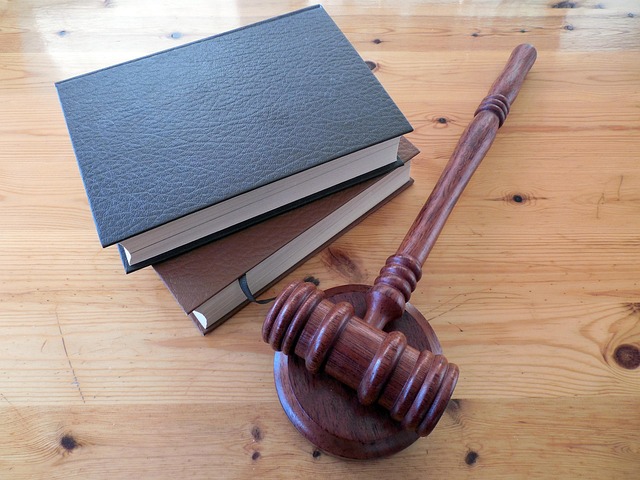The Timeline for Post-Conviction Relief Process is vital for challenging criminal convictions, offering a fair chance at new trials or reduced sentences. This process, starting within 1-2 years post-conviction, involves strict deadlines for filing Motions for Relief with valid legal grounds and supporting evidence. Appeals, crucial for error correction, require timely briefs arguing against conviction. Understanding this timeline, local rules, and strategic planning are essential for navigating complex cases like white-collar defense successfully towards clemency or pardon.
“Unraveling the intricate paths of criminal law, this comprehensive guide delves into the crucial aspects of post-conviction relief. From the foundational understanding of its basics to navigating complex legal procedures, we explore essential steps in the timeline for post-conviction relief.
Learn about filing a motion within specific timeframes and meeting stringent requirements. Discover the appeals process following an initial denial and uncover potential avenues through executive clemency and pardon requests. This article provides invaluable insights into ensuring justice and fairness in the legal system.”
- Understanding Post-Conviction Relief Basics
- Filing a Motion for Relief: Timeframe & Requirements
- Appeals Process: After Initial Denial
- Exploring Executive Clemency & Pardon Options
Understanding Post-Conviction Relief Basics

Understanding the basics of post-conviction relief is crucial for navigating the legal system, especially after a criminal conviction. This process provides individuals with an opportunity to challenge their verdict and potentially achieve a new trial or reduced sentence. The timeline for post-conviction relief involves several key stages, including filing a motion, a response from the prosecution, and potential hearings. Each step has its own set of deadlines, which must be strictly adhered to in order to maintain legal standing.
In the world of criminal law, this process plays a vital role in ensuring fairness across all stages of the investigative and enforcement process. It also allows for the possibility of correcting errors or uncovering new evidence that may have been overlooked during initial trials. Moreover, post-conviction relief serves as a bridge between the respective business, philanthropic, and political communities by providing avenues for review and potential clemency for those who may have been wrongfully convicted.
Filing a Motion for Relief: Timeframe & Requirements

Filing a Motion for Relief, which is often part of the post-conviction relief process, involves a strict timeline and specific requirements. The Timeline for Post-Conviction Relief Process varies depending on jurisdiction but generally starts within a reasonable time after the conviction, often within one to two years. This prompt action ensures that the case can be reviewed while memories are fresh and relevant evidence is readily available.
When initiating this process, individuals must meet certain criteria. They should have a valid legal basis for challenging their conviction, such as ineffective assistance of counsel or newly discovered evidence. The motion must be supported by detailed affidavits, legal arguments, and any supporting documents that strengthen the case. An unprecedented track record in white collar and economic crimes across the country underscores the importance of meticulous preparation and adherence to these requirements for a successful Motion for Relief.
Appeals Process: After Initial Denial

After an initial denial of a conviction, the appeals process begins, marking a crucial phase in the timeline for post-conviction relief. This process involves several steps that must be carefully navigated by both parties. The defendant or their general criminal defense attorney will typically file a notice of appeal within a specified time frame, which varies according to jurisdiction. This is followed by the submission of legal briefs, where arguments challenging the original verdict are presented.
High-stakes cases often rely on detailed documentation and legal strategies during this phase. The court then reviews the evidence, testimony, and applicable laws to decide whether to uphold, modify, or completely dismiss all charges. Understanding the timeline is essential; each stage has deadlines that must be met to ensure a fair and efficient legal process.
Exploring Executive Clemency & Pardon Options

The journey toward post-conviction relief begins long after a criminal conviction is finalized. For those seeking executive clemency or pardon, understanding the timeline and options available is paramount. The process often involves meticulous documentation, legal research, and strategic planning to present a compelling case. This is especially crucial for corporate and individual clients facing significant charges, such as those in white-collar defense cases, where an unprecedented track record of success can significantly influence the outcome.
Each jurisdiction establishes its own rules and procedures for clemency requests. Generally, applicants must gather supporting evidence, prepare detailed legal briefs, and submit their applications to the relevant authorities within specific timeframes. The timeline for post-conviction relief processes varies widely, depending on local laws and the complexity of each case. Patience, persistence, and a deep understanding of these procedures are essential steps in navigating this intricate path toward potential pardon or clemency.
The post-conviction relief process, involving motions for relief, appeals, and executive clemency, offers a chance for justice beyond initial verdicts. Understanding the timeline and requirements is crucial for successful navigation through this intricate landscape. By recognizing when to act, compiling robust documentation, and exploring all available avenues, individuals can hope to uncover new evidence or errors that may have been overlooked. The journey is often lengthy and complex, but it’s a vital step in ensuring fairness and addressing potential miscarriages of justice. Remember, the Timeline for Post-Conviction Relief Process plays a significant role in these efforts.






